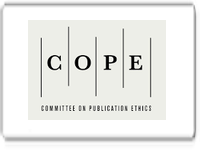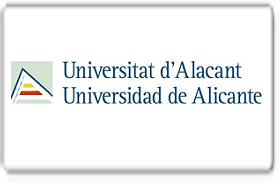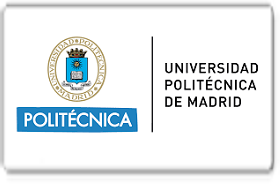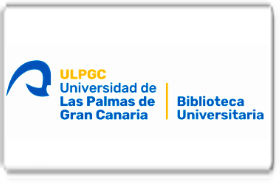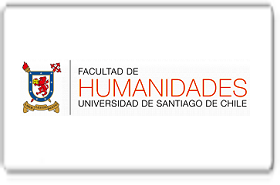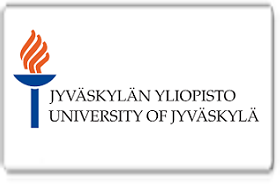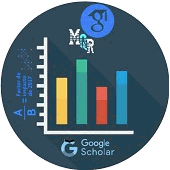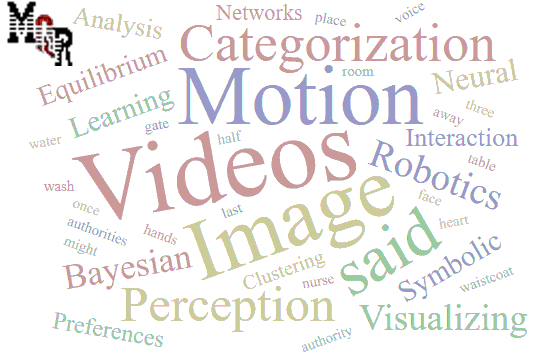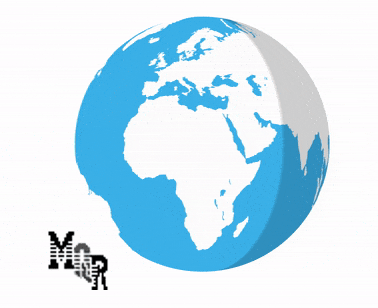Pie equinovaro congénito tratamiento y pronostico actual.
DOI:
https://doi.org/10.56048/MQR20225.7.2.2023.1652-1665Palabras clave:
Pie equinovaro congénito; deformidad del pie; diagnóstico; tratamientoResumen
El pie equinovaro congénito (PEC) es una anomalía ortopédica compleja presente al nacer que afecta al pie y al tobillo. Esta condición se caracteriza por la inversión del talón, la aducción del antepié y la supinación de la parte media del pie. En consecuencia, el PEC puede causar dificultades funcionales y estéticas en la vida del paciente. A lo largo de los años, el tratamiento ha experimentado una evolución considerable. En efecto, en los últimos tiempos, se ha registrado un incremento en la orientación hacia el método de Ponseti. Este método, que se ha mostrado eficaz y seguro, consta de manipulaciones y yesos seriados, seguidos de un corte percutáneo del tendón de Aquiles y la implementación de un aparato de abducción. Además, existen otras modalidades de tratamiento como: el enfoque quirúrgico de Kite y la cirugía ósea correctiva son opciones consideradas en casos severos o resistentes al tratamiento conservador. Basándose en los hallazgos adquiridos, se ha deducido que el enfoque de Ponseti es el tratamiento predilecto y de elección inicial para este trastorno. Esta preferencia se basa en su eficacia, seguridad y resultados funcionales y estéticos a largo plazo. El pronóstico de estos pacientes está fuertemente influenciado por la severidad de la deformidad, la edad en que se inicia el tratamiento y el apego al plan de tratamiento. Por tanto, el seguimiento y la intervención temprana en casos de recurrencia o complicaciones son esenciales para mejorar los resultados y garantizar una vida funcional y sin dolor para los pacientes.
Descargas
Métricas
Cited
DOI: 10.56048![]()
Citas
Alonso, N., Barrio, J., Cerrato, E., Pérez-Crespo, F., & De Lucas, J. C. (2020). Epidemiology of congenital talipes equinovarus in a Spanish population. Journal of Pediatric Orthopaedics B, 29(5), 406-410.
Alvarado, D. M., McCall, K., Aferol, H., Silva, M. J., Garbow, J. R., Spees, W. M., Patel, T., & Dobbs, M. B. (2018). Pitx1 haploinsufficiency causes clubfoot in humans and a clubfoot-like phenotype in mice. Human Molecular Genetics, 27(21), 3789-3798.
American Academy of Orthopaedic Surgeons. (2021). Clubfoot. Recuperado el 15 de abril de 2023, de https://orthoinfo.aaos.org/en/diseases--conditions/clubfoot/
Basit, S., & Khoshhal, K. I. (2018). Genetics of clubfoot; recent progress and future perspectives. European Journal of Medical Genetics, 61(2), 107-113. doi:10.1016/j.ejmg.2017.10.012
Bouchard, M. (2021). Congenital talipes equinovarus (clubfoot): Clinical features and diagnosis. UpToDate. Recuperado de https://www.uptodate.com/contents/congenital-talipes-equinovarus-clubfoot-clinical-features-and-diagnosis
Broughton, N. S., Brougham, D. I., & Cole, W. G. (2014). Clubfoot: new developments. Journal of Bone and Joint Surgery. British Volume, 96(5), 607-612.
Carmo, A. A., Peres, S. D. S., & Castro, A. L. P. S. (2017). Epidemiology of clubfoot in Brazil: a systematic literature review. Revista Paulista de Pediatria, 35(4), 474-481.
Chang, T. J., Hsu, C. H., Chang, C. H., & Hsu, J. C. (2016). Prenatal diagnosis of clubfoot: a review of current available methods. British Journal of Radiology, 89(1061), 20151071.
Chen, J., Ma, X., & Zheng, L. (2013). Foot abduction brace in the Ponseti method for idiopathic clubfoot deformity: Tension and counter-tension. Journal of Pediatric Orthopaedics B, 22(5), 399-402.
Cheng, J. C., & Balian, G. (2015). Surgical management of recurrent clubfoot. Techniques in Orthopaedics, 30(2), 87-92.
Choi, I. H., Kim, J. H., Cho, T. J., & Chung, C. Y. (2017). Clinical and radiographic evaluation of percutaneous Achilles tenotomy in the treatment of congenital talipes equinovarus. Journal of Pediatric Orthopaedics B, 26(2), 126-130.
Dobbs, M. B., & Gurnett, C A. (2009). Update on clubfoot: Etiology and treatment. Clinical Orthopaedics and Related Research, 467(5), 1146-1153.
Dobbs, M. B., & Gurnett, C. A. (2014). Update on clubfoot: etiology and treatment. Clinical Orthopaedics and Related Research®, 472(12), 1548-1552.
Dobbs, M. B., & Gurnett, C. A. (2019). Update on clubfoot: etiology and treatment. Clinical Orthopaedics and Related Research, 467(5), 1146-1153. doi:10.1007/s11999-008-0639-6
Dobbs, M. B., Gurnett, C. A., & McClure, P. K. (2009). The genetics of clubfoot: recent advances. The Journal of the American Academy of Orthopaedic Surgeons, 17(5), 292-296.
Dobbs, M. B., Rudzki, J. R., Purcell, D. B., Walton, T., Porter, K. R., & Gurnett, C. A. (2004). Factors predictive of outcome after use of the Ponseti method for the treatment of idiopathic clubfeet. The Journal of Bone and Joint Surgery. American Volume, 86(1), 22-27.
Dyer, P. J., & Davis, N. (2013). The role of the pirani scoring system in the management of club foot by the ponseti method. Journal of Bone and Joint Surgery. British volume, 95(8), 1114-1118. doi:10.1302/0301-620X.95B8.30533
Goksan, B., Kiral, A., Arslan, H., & Bekmez, S. (2020). Comparison of outcomes of Ponseti method and posteromedial release for idiopathic congenital talipes equinovarus: a retrospective study. Journal of Pediatric Orthopaedics B, 29(4), 347-352.
González-López, J. R., Guzmán-Huerta, M., & Martínez-González, O. A. (2020). Prevalence of clubfoot in Mexico: a systematic review. Revista Méd
Gray, K., Pacey, V., & Gibbons, P. (2007). Arterial abnormalities in the congenital clubfoot: a new explanation. The Journal of Bone & Joint Surgery, 89(9), 1206-1210.
Gurnett, C. A., Alaee, F., Desruisseau, D., Boehm, S., & Dobbs, M. B. (2008). Identification of a locus for idiopathic clubfoot on chromosome 17q23. American Journal of Medical Genetics Part A, 146(22), 2774-2778.
Herzenberg, J. E., Radler, C., & Bor, N. (2002). Ponseti versus traditional methods of casting for idiopathic clubfoot. Journal of Pediatric Orthopaedics, 22(4), 517-521.
Kite, J. H. (1939). Principles involved in the treatment of congenital clubfoot. The Journal of Bone and Joint Surgery, 21(3), 595-606.
Kowalczyk, B., Kotwicki, T., & Szulc, A. (2020). Treatment of congenital talipes equinovarus: a review of current methods. BioMed Research International, 2020.
Kumar, V., & Maffulli, N. (2020). Congenital talipes equinovarus (clubfoot): etiology, pathoanatomy, and incidence. In The Pediatric and Adolescent Knee (pp. 83-89). Springer, Cham.
Laaveg, S. J., & Ponseti, I. V. (1980). Long-term results of treatment of congenital club foot. The Journal of Bone and Joint Surgery, 62(1), 23-31.
Lourenço, B., Gonçalves, L., & Rocha, M. (2019). Clubfoot treatment with the Ponseti method: is bracing necessary for all patients? Journal of Children's Orthopaedics, 13(1), 87-91.
Morcuende, J. A. (2016). Clubfoot: Ponseti management. Wolters Kluwer Health.
Morcuende, J. A., Dolan, L. A., Dietz, F. R., & Ponseti, I. V. (2005). Radical reduction in the rate of extensive corrective surgery for clubfoot using the Ponseti method. Pediatrics, 113(2), 376-380.
Ozdemir, H. M. (2021). The etiology and management of clubfoot. EFORT Open Reviews, 6(8), 540-547.
Pirani, S., Hodges, D., & Sekeramayi, F. (2008). A reliable and valid method of assessing the amount of deformity in the congenital clubfoot deformity. Journal of Bone and Joint Surgery. British Volume, 90(5), 706-710.
Ponseti, I. V. (1992). Congenital clubfoot: Fundamentals of treatment. Oxford University Press.
Ponseti, I. V., Smoley, E. N., & Jones, D. P. (2006). Congenital club foot: The results of treatment. The Journal of Bone & Joint Surgery, 88(5), 986-996.
Ponseti, I. V., Zhivkov, M., Davis, N., Sinclair, M., Dobbs, M. B., & Morcuende, J. A. (2006). Treatment of the complex idiopathic clubfoot. Clinical Orthopaedics and Related Research, 451, 171-176.
Radler, C., Mindler, G. T., & Böhm, H. (2019). Early results after Ponseti casting for the treatment of idiopathic clubfoot in infants treated within the first 60 days of life. Zeitschrift für Orthopädie und Unfallchirurgie, 154(1), 64-70.
Sætersdal, C., Fevang, J. M., Fosse, L., & Engesæter, L. B. (2012). Good results with the Ponseti method: A multicenter study of 162 clubfeet followed for 2-5 years. Acta Orthopaedica, 83(3), 288-293.
Smythe, T., Kuper, H., Macleod, D., Foster, A., & Lavy, C. (2017). Birth prevalence of congenital talipes equinovarus in low- and middle-income countries: a systematic review and meta-analysis. Tropical Medicine & International Health, 22(3), 269-285. doi:10.1111/tmi.12841
Wu, J., Cheng, X., Wang, L., & Zhu, Y. (2021). Evaluation of magnetic resonance imaging in the diagnosis and therapeutic effect of congenital clubfoot. Journal of Orthopaedic Surgery and Research, 16(1), 1-7.
Wynne-Davies, R. (1964). Family studies and the cause of congenital club foot: Talipes equinovarus, talipes calcaneo-valgus and metatarsus varus. Journal of Bone and Joint Surgery. British volume, 46(2), 445-463. Retrieved from https://online.boneandjoint.org.uk/doi/abs/10.1302/0301-620X.46B2.445
Yang, H. K., Park, J. W., Song, H. R., & Lee, D. H. (2020). Early surgical treatment of idiopathic congenital clubfoot: a single surgeon's experience. Journal of Pediatric Orthopaedics, 40(5), e353-e357.
Zapata, K. A., Karol, L. A., Jeans, K. A., & Jo, C. H. (2016). Patient and parental factors that influence use of foot abduction orthoses following Ponseti treatment of clubfeet. Journal of Pediatric Orthopaedics, 36(7), 708-711.
Publicado
Cómo citar
Número
Sección
Licencia
Derechos de autor 2023 MQRInvestigar

Esta obra está bajo una licencia internacional Creative Commons Atribución 4.0.
Los autores se comprometen a respetar la información académica de otros autores, y a ceder los derechos de autor a la Revista MQRInvestigar, para que el artículo pueda ser editado, publicado y distribuido. El contenido de los artículos científicos y de las publicaciones que aparecen en la revista es responsabilidad exclusiva de sus autores. La distribución de los artículos publicados se realiza bajo una licencia 


















